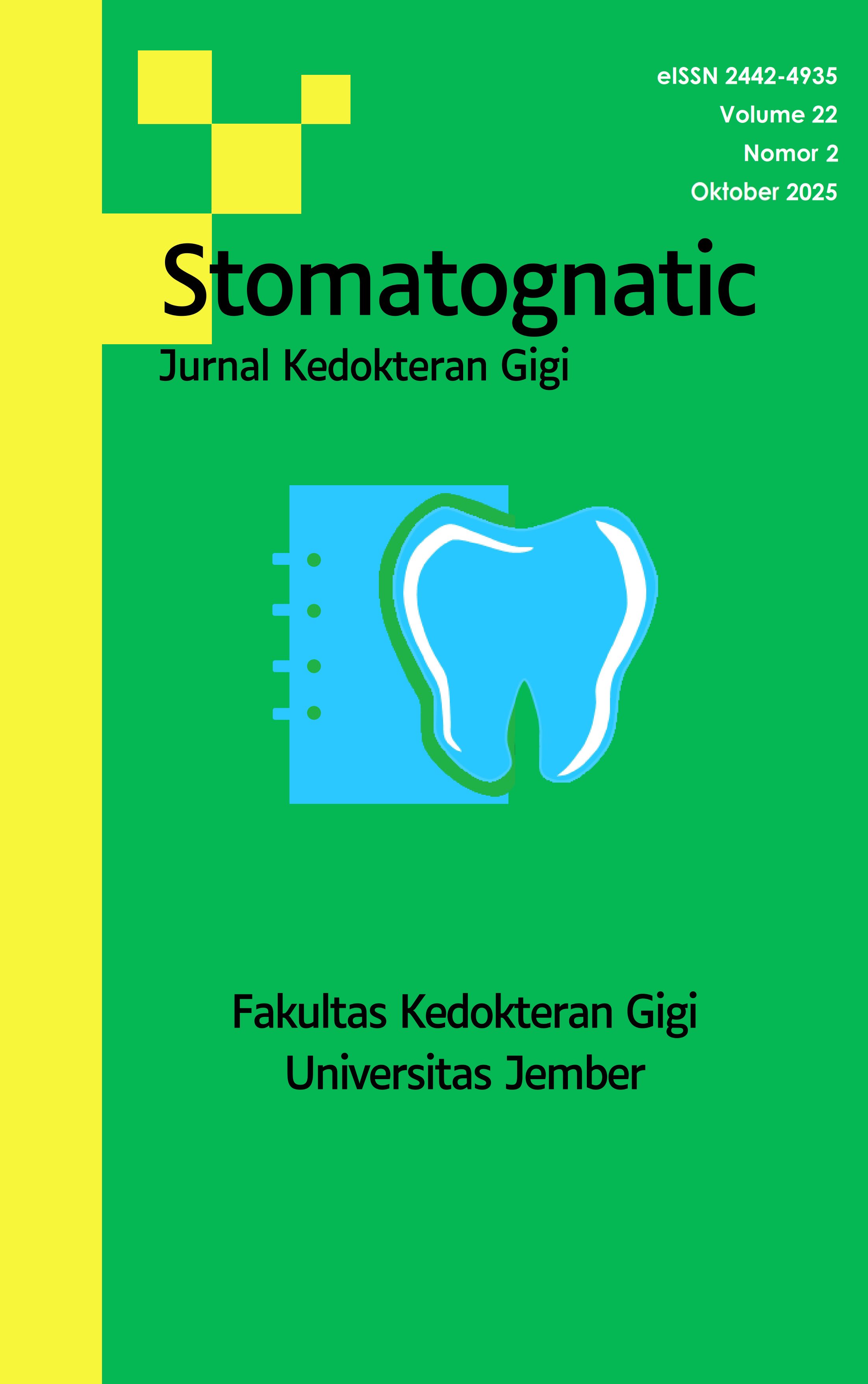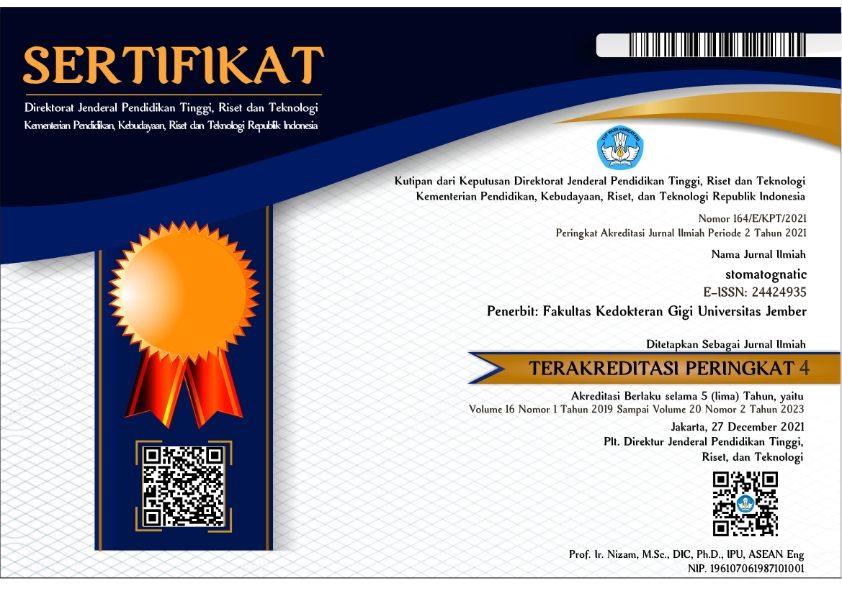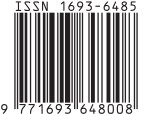Uji Viabilitas Nanopartikel Ekstrak Kulit Buah Kopi Robusta (Coffea canephora) terhadap Fibroblas Gingiva
DOI:
https://doi.org/10.19184/stoma.v22i2.53741Abstract
Robusta coffee fruit skin contains secondary metabolites such as saponins, polyphenols, alkaloids, and flavonoids, which can act as anti-inflammatory and antioxidant agents. Meanwhile, the form of nanoparticles has the advantage of high solubility, increases tooth hardness, and does not damage enamel. As a alternative herbal ingredients, one of the ingredients is viabel to oral cavity cells, such as gingiva Fibroblasts. This study aims to analyze the viability of nanoparticles from robusta coffee fruit skin extract (Coffea canephora) at concentrations of 7.81, 15.62, 31.25, 62.5, 125, and 250 μg/ml against gingival fibroblasts. This study is experimental laboratory research. This study used a control group and six treatment groups with concentrations of 7.81, 15.62, 31.25, 62.5, 125, and 250 μg/ml. The method used in this viability test is the MTT assay on gingival fibroblast. Absorbance data were read using a spectrophotometer at a wavelength of 560 nm. The study results demonstrated significant differences in cell viability across the various concentration groups. The highest fibroblast viability was observed in the treatment group receiving robusta coffee peel extract nanoparticles at a concentration of 31.25 μg/ml, reaching 118%, whereas the lowest viability (25.8%) was recorded in the group treated with a concentration of 250 μg/ml. Nanoparticles of robusta coffee fruit peel extract at concentrations of 15.62 μg/ml, 31.25 μg/ml, and 62.5 μg/ml are viable, with the highest viability observed at 31.25 μg/ml, while at concentrations of 125 μg/ml and 250 μg/ml are non-viable against gingival fibroblasts.







